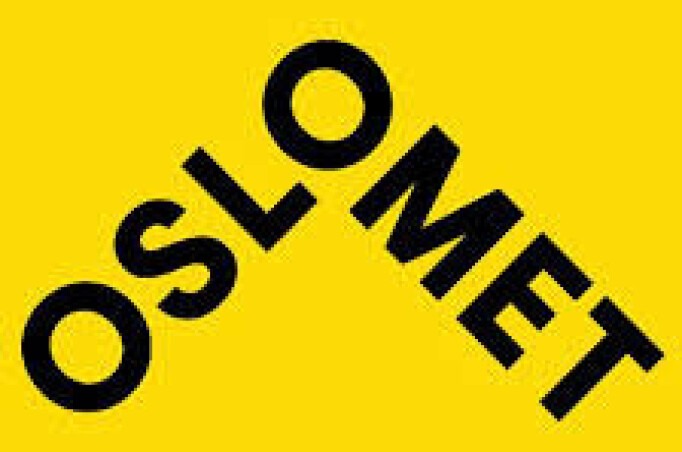THIS CONTENT IS BROUGHT TO YOU BY Oslo Metropolitan University - read more

No one wants to stop using plastics in clothing
The fashion industry bears responsibility for the waste generated by synthetic clothing – even though the blame is often directed at consumers, according to researchers.
We've all heard about the elephant in the room, but what if that elephant is made of plastic and is hiding inside our clothes?
In recent decades, the production of synthetic plastic clothing has exploded, and the growth is expected to continue. The amount of clothes made from natural materials such as cotton, wool, silk, and linen has remained almost stagnant during the same period.
Plastic textiles lead to enormous environmental problems. Emissions of microplastics and chemicals pollute water, oceans, and soil. The waste from our discarded clothes turns into massive landfills in countries with poor waste management.

Strategies for sustainability
“The blame is often placed on consumers because we both buy and constantly desire new clothes. Through this work, we want to hold governments and producers accountable,” Lisbeth Løvbak Berg at the National Institute for Consumer Research SIFO says.
Together with Professor Ingun Grimstad Klepp and several other researchers, Berg has examined the strategies of various governments, industry organisations, and clothing retailers.
The goal has been to gain knowledge about how different actors in the fashion industry deal with the ever-increasing number of synthetic textiles on the market.
It's the technology allowing plastic to become clothes that is behind the enormous increase in the quantity of clothes on the market. Synthetic clothes are cheap to produce, lightweight and easy to transport globally, and yield enormous profits in a trend-hungry world.
Researchers call this growth in synthetic textiles the ‘plastic elephant’. It's a growth everyone knows is there, but few are willing to do something about.
A lack of measures to combat the use of plastic
Little is being done to reduce the use of plastic in textiles, and virtually nothing is being done by brands or industry organisations, the report shows.
None of the strategies present clear, direct measures to stop plasticisation, even though some public decision-makers indirectly include such a goal. This includes a desire to replace fossil raw materials, plastic, with other materials, such as bioplastics.
Neither clothing retailers nor the industry organisations include strategies to reduce the ever-increasing volume of synthetic clothing.
“They overlook or don't want to see the problem, in other words, a typical elephant in the room,” Berg says.
The myth of ‘recycled’ clothing
Clothing retailers have indeed understood the importance of showing that they take the environment seriously by offering reuse, resale, and technologies to reduce microfiber emissions. Some offer repair kits, while others provide laundry bags to prevent the spread of microplastics.
One solution clothing manufacturers have come up with is recycled plastic fibers. In stores, it's common to find garments labelled as 'recycled polyester' or something similar. Often, this material consists of plastic bottles that have been turned into textile fibres. And ‘recycled’ sounds good, right?
“The problem is that the recycled plastic also turns into microplastics, so this solution makes no difference to the environmental problem,” Berg says.
Criticise governments
Researchers believe that governments are also not doing enough to prevent plastic from ending up in textiles, although there is a lot of good work in progress.
Through the Eco-design Directive, the EU will promote more circular business models by strengthening repair and reuse sectors. There is also an Extended Producer Responsibility (EPR) system in the works, which will require manufacturers to take care of our clothing waste when we're done using a garment, essentially taking responsibility for a garment from production to disposal.
Recently, the Ministry of Climate and Environment received a report from a committee exploring how extended producer responsibility can be implemented in Norway.
“There are several hopeful aspects,” says Berg, mentioning improved waste management, the development of textiles not made from plastic bottles, and textile recycling.
“But they could also have placed more emphasis on using local natural fibres we have, both in Norway and the EU,” she adds.
The lone solution to the problem
However, researchers believe that neither governments nor the industry go far enough in reducing the volumes of synthetic clothing flooding the market.
They argue that there is only one thing that actually reduces the environmental impact of our clothing consumption, and that is to reduce the volumes.
Through the proposal for a Targeted Producer Responsibility (TPR), SIFO wants those producing clothes with a lot of plastic to pay the most. The goal is to reduce the amount of plastic in clothing. This could be measured, for example, by looking at how long garments from different retailers are in use on average.
Repairs take too long
“There's nothing in the strategies of companies or governments that addresses reduction,” Berg says. “The idea behind repair strategies is that, in the long run, this will reduce clothing consumption and production. The problem is that it will take too long in relation to how serious the environmental problems are.”
The whole issue needs to be turned on its head, she believes.
“If there were fewer items in circulation, we would have to repair them. If there were fewer garments, we wouldn't have a choice. We are accustomed to growth and using the planet's resources. It's not easy to think differently in a growth economy,” she says.
Reference:
Klepp et al. The plastic elephant. Overproduction and synthetic fibres in sustainable textile strategies, SIFO-report no. 5-2023.

This content is paid for and presented by OsloMet
This content is created by Oslo Metropolitan University's communication staff, who use this platform to communicate science and share results from research with the public. Oslo Metropolitan University is one of more than 80 owners of ScienceNorway.no. Read more here.
More content from OsloMet:
-
Many adolescents think they're not interested in politics – until a teacher gets them to reflect on their own lives
-
Researcher: Local government was key to managing the pandemic
-
"Norwegians practice a friendship version of a ‘one-night stand'"
-
"We need to talk about how we assess teacher students"
-
Cannabis use in Norway has increased: “Not everyone needs moral lectures or worried looks"
-
Many children with ADHD do not thrive at school




































